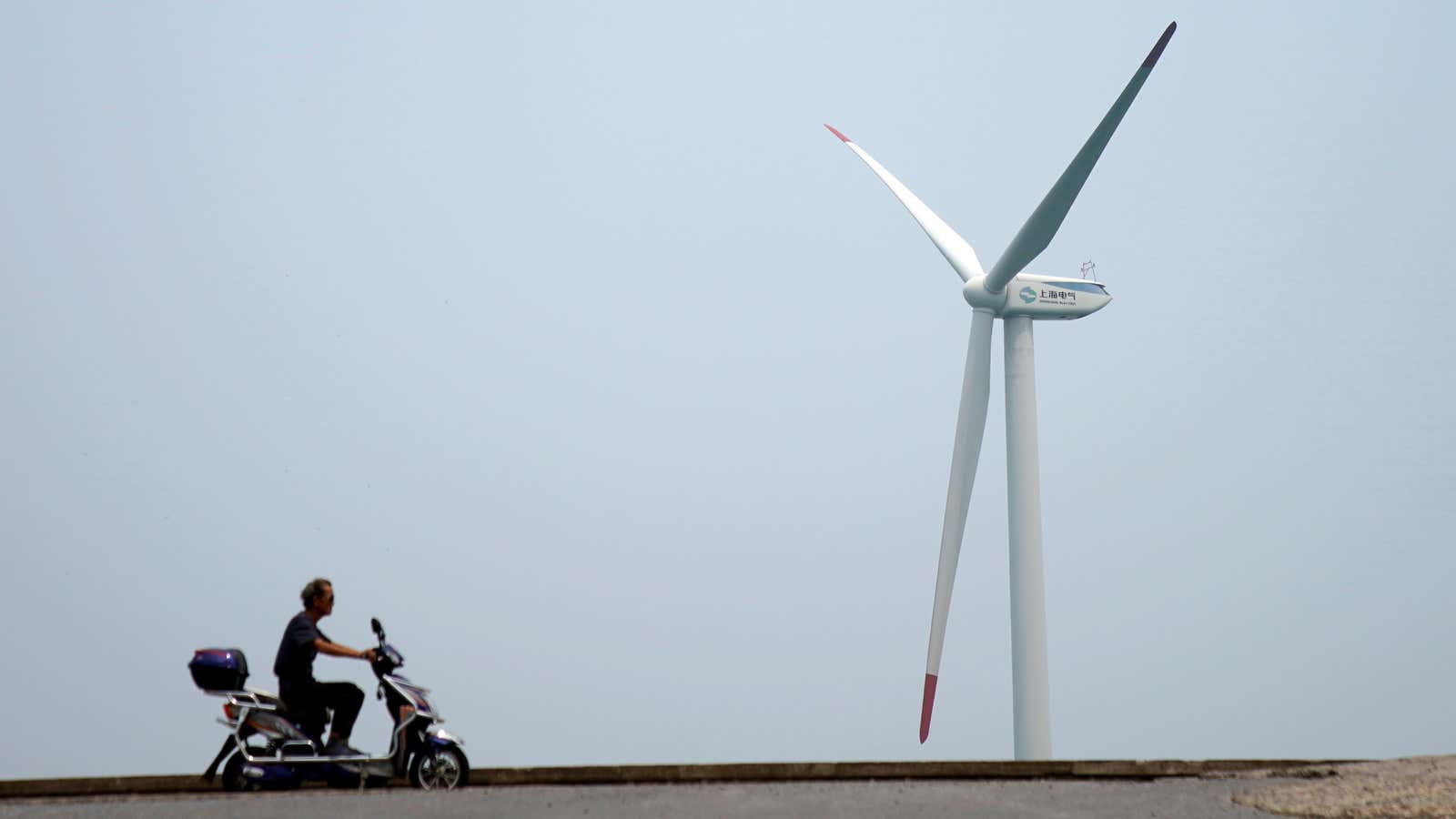China watchers hoped China’s latest five-year plan, the policy document dictating the country’s near-term economic strategy, would contain new details on how the country plans to hit peak greenhouse gas emissions by 2030, and maybe even move that date ahead a few years.
But the plan, released on March 5, failed to deliver. The world’s top greenhouse gas emitter announced no new targets beyond what officials already committed to over the last year. Although the plan calls for a “major push” on clean energy development, the vague commitment all but guarantees emissions will continue to increase until 2030, when officials have promised they will peak.
“It’s simply aggregating existing targets from last year,” said Fan Dai, director of the California-China Climate Institute at the University of California, Berkeley. “There’s a lot of room for further development and ambition, especially around those targets that were missing that we hoped would be included.”
The plan calls for CO2 emissions per unit of GDP to decrease 18% by 2025, on par with progress over the last five years. It also calls for 20% of all energy to come from non-fossil sources by 2025, another continuation of past trends. The missed opportunities, Dai said, include specifying a cap for greenhouse gas emissions and coal consumption, moving up the date of peak emissions to 2025, and outlining a specific decarbonization plan for the power sector.
Overall, the plan puts the country on track to meet its 2030 peak emissions target and its goal to reach net-zero emissions by 2060, Dai said. But those goals are still “highly insufficient” to meet the global warming limit enshrined in the Paris Agreement, according to Carbon Action Tracker, a research group. Especially as the country pushes for a construction-heavy economic recovery from the pandemic, the hardest choices to accelerate decarbonization are being pushed to future plans, Dai said.
The plan does include one important new detail: A target for nuclear power capacity to reach 70 gigawatts by 2025, from 52 gigawatts today. That’s much more nuclear than is currently under development, according to the Center for Research on Energy and Clean Air, a signal that leader Xi Jinping is serious about pushing China to become a leading nuclear energy superpower.
There’s still time for China to avert climate catastrophe: By December, more detailed regional and sector-specific five-year plans are due, as well as a new statement of commitments under the Paris Agreement. Those will also send a signal to the US, EU, India, and other major emitters about where China sees the bar for global climate action, Dai said: “There needs to be a lot more effort on the table than what we’re seeing in the Five-Year Plan so far.”
